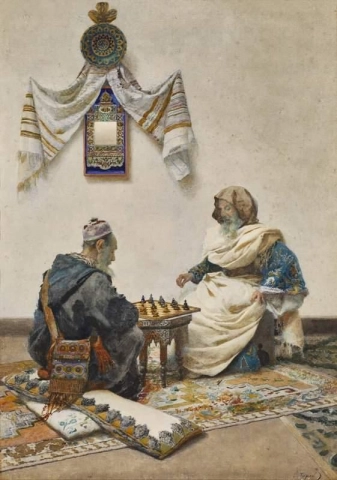Hand-painted painting reproductions - Artists - Tapiró
Imagine owning an original work of art by Tapiró, one of the greatest artists in history. At POD we offer you the opportunity to make this dream come true. We reproduce Tapiró's works down to the smallest detail, so you can enjoy them in your own home.
Our reproductions are made by experienced artists who use the best materials and techniques. We are dedicated to providing you with the highest quality works of art, which will bring joy and inspiration to your family for generations.
Josep Tapiró i Baró (1836-1913) was a Spanish painter known for his captivating watercolor portraits of Tangier's inhabitants. His works were characterized by their realism, attention to detail, and warm, inviting colors, capturing the essence of Moroccan society and its people.
Born in Reus, Spain, in 1836, Josep Tapiró i Baró displayed an early aptitude for art, encouraged by his father, a lithographic printer. His artistic inclinations were nurtured by his family, who provided him with opportunities to explore his artistic talents.
In 1856, Tapiró i Baró enrolled at the Llotja School of Fine Arts in Barcelona, where he studied under renowned painters like Pau Milà i Fontanals and Claudi Lorenzale. During his studies, he developed a deep appreciation for realism and a strong foundation in drawing and painting techniques.
In 1860, Tapiró i Baró embarked on a journey to Morocco, seeking inspiration from the vibrant culture and rich artistic traditions of North Africa. He settled in Tangier, where he was captivated by the city's exotic atmosphere, diverse population, and picturesque landscapes.
Tangier became Tapiró i Baró's artistic muse, and he dedicated himself to capturing the essence of Moroccan life through his watercolor paintings. He focused primarily on portraits, depicting people from all walks of life, from local merchants and artisans to high-ranking officials and religious figures.
Tapiró i Baró's watercolor portraits were characterized by their realism, attention to detail, and ability to capture the individual personalities of his subjects. He meticulously rendered facial features, clothing details, and subtle gestures, conveying the essence of his subjects' lives and experiences.
His paintings were also notable for their cultural sensitivity and avoidance of Orientalist clichés. Tapiró i Baró respected the traditions and beliefs of his subjects, portraying them with dignity and authenticity. He became deeply immersed in Moroccan culture, learning the language and adopting local customs, which further enhanced his understanding and appreciation of his subjects.
Josep Tapiró i Baró's artistic achievements were widely recognized during his lifetime. He exhibited regularly in major cities like Barcelona, Madrid, and Paris, receiving numerous awards and accolades for his work. His paintings were also highly sought after by collectors, and many of his works are now housed in prominent museums worldwide.
Tapiró i Baró's legacy lies in his significant contributions to Spanish Orientalism, his ability to capture the essence of Moroccan society and its people through his realistic watercolor portraits, and his role in promoting cultural understanding and sensitivity in art. His works continue to be cherished for their realism, warmth, and ability to evoke a sense of connection to Moroccan culture and its unique heritage.
Today, Tapiró i Baró's paintings are held in prominent collections like the Museu Nacional d'Art de Catalunya, the Museo del Prado, and the Musée d'Orsay. His work stands as a testament to the enduring power of realism in capturing the essence of humanity and the importance of cultural sensitivity in artistic expression.





































